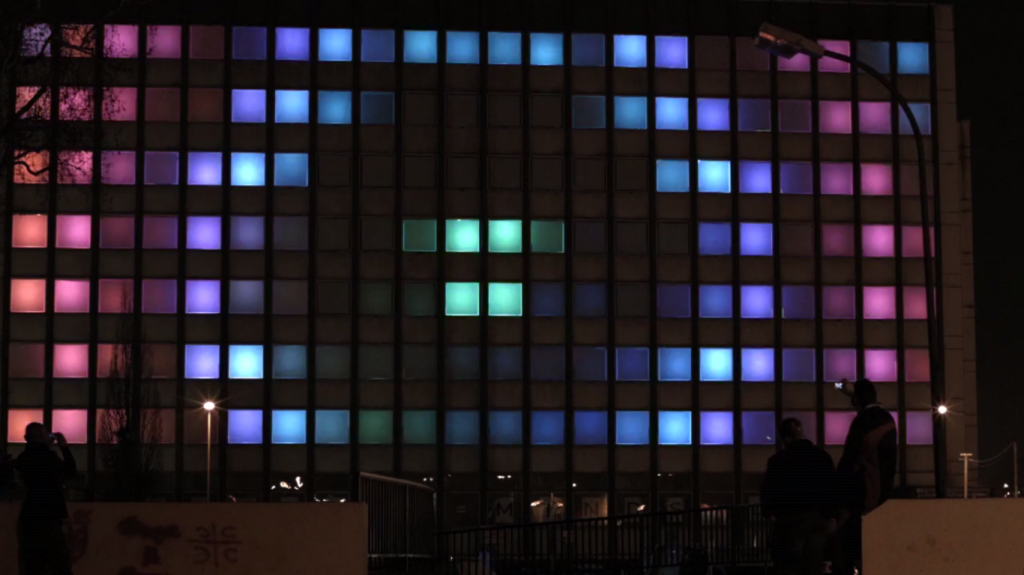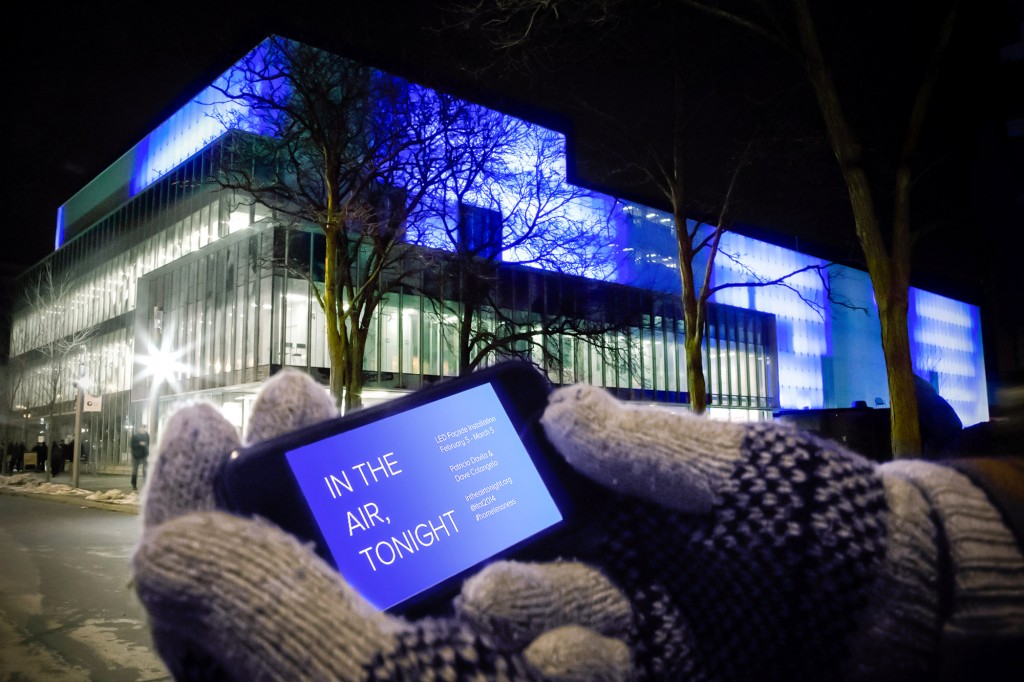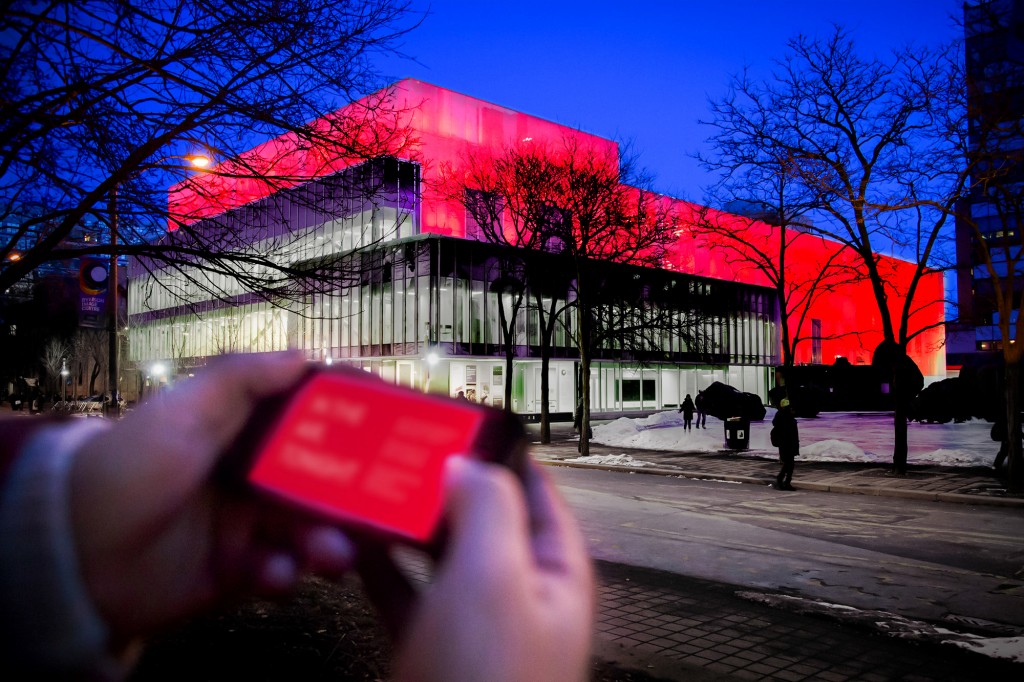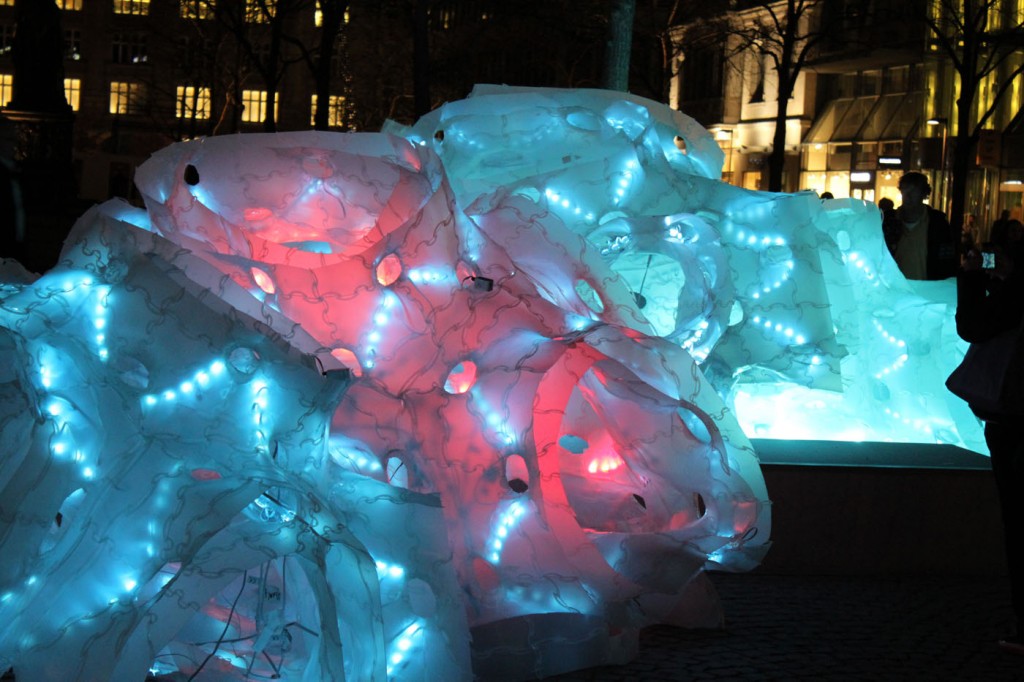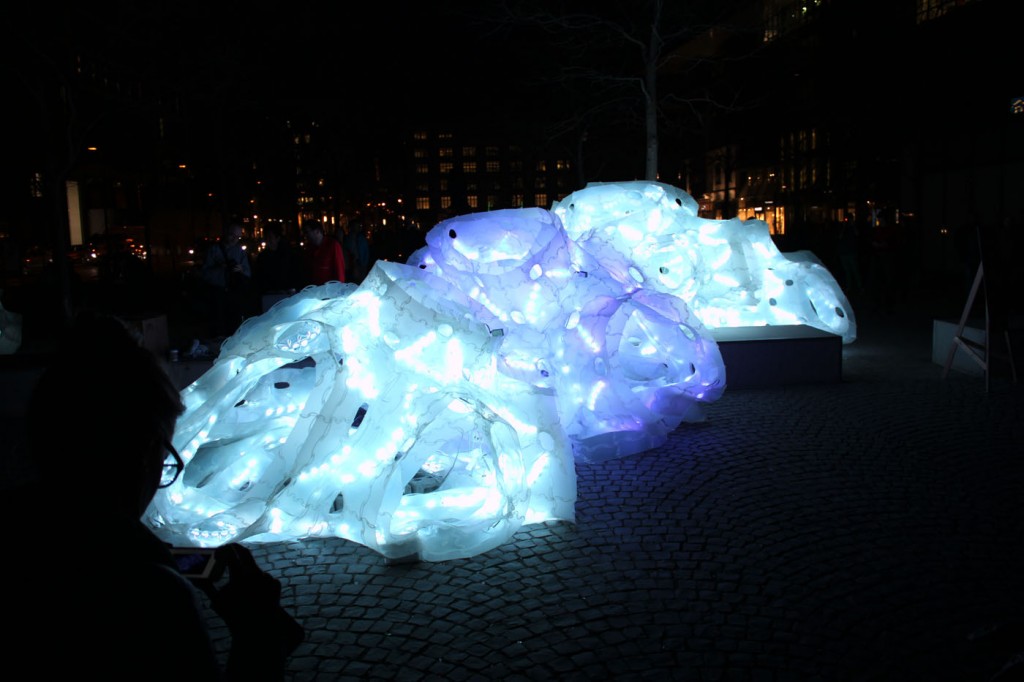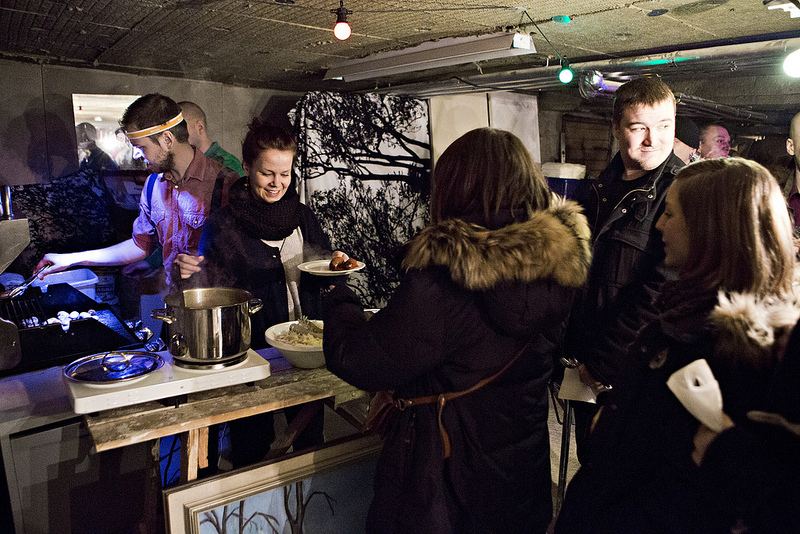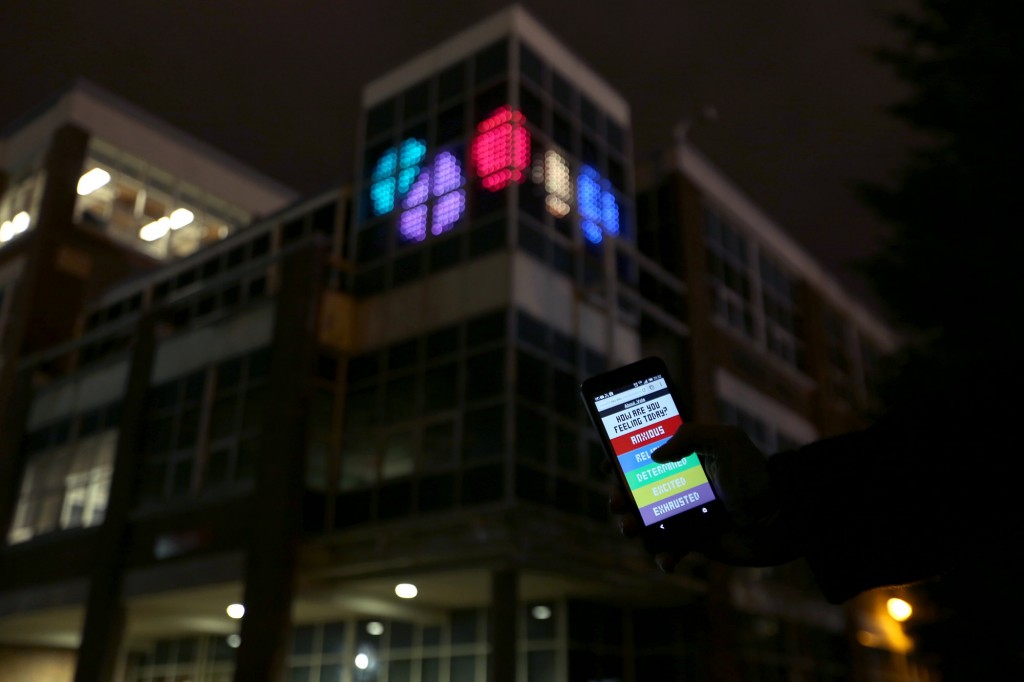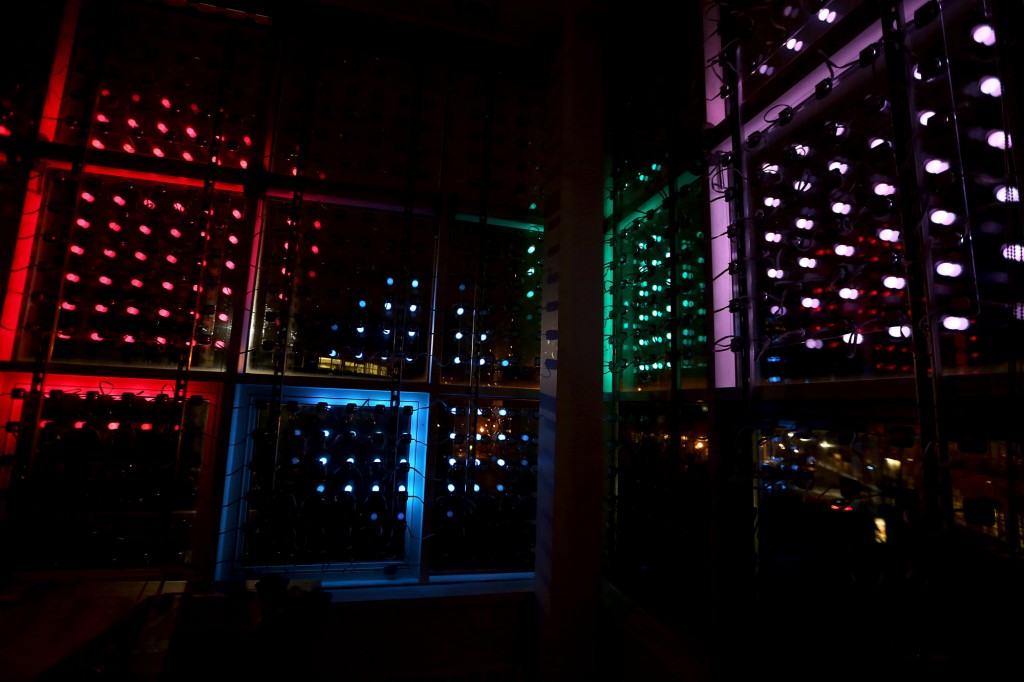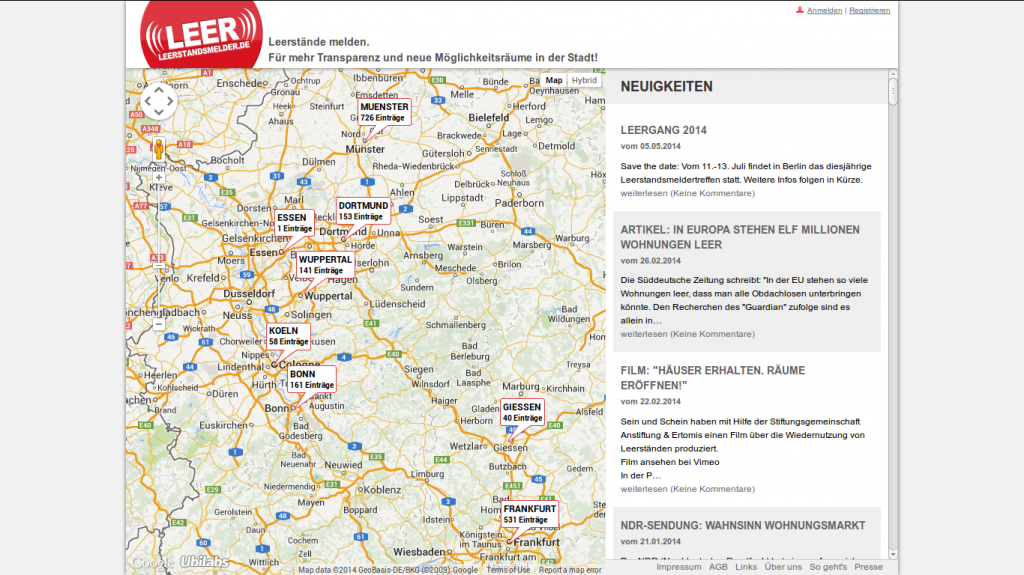
Leerstandmelder is an online map that allows city inhabitants to report vacant spaces in their surroundings. The map highlights in this way some of the inequalities created in the city by long-term vacant spaces, as such could be inhabited or used by people in need for them. According to a report released by The guardian many of the empty spaces in Europe are bought just as investment and some have never been used.
The phenomenon has already reached an alarming scale, as approximately 11 million houses remain vacant in Europe. It doesn’t matter if they are old or new, living or industrial spaces, if they are in the centre or the periphery, or if they are public or private. They directly affect people who struggle to find affordable flats and work spaces in their cities.
(more…)
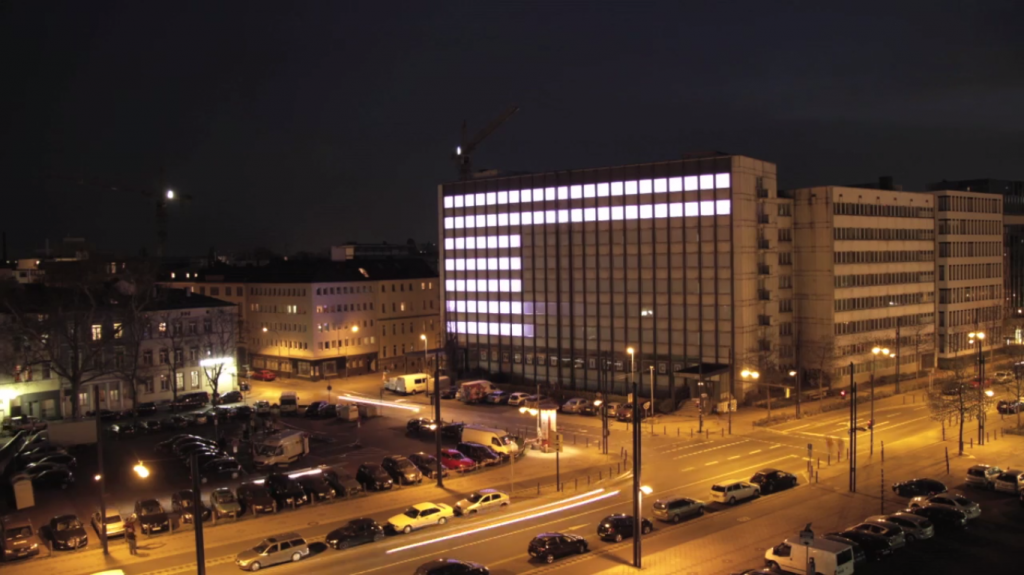 LowRes is an interactive installation that used color spotlights to turn the facade of a decaying building into a media facade. It used a simple technical solution to turn the windows into pixels and create interactions with the spectators. The installation was created by SENSORY-MINDS for the Luminale 2014.
For the realization of the project the team found a building that was at risk of collapsing and thus vacant. The building, located at Offenbach am main, offered the perfect conditions for the realization of such installation, as the evenly distributed windows could be turned easily into huge pixels. This particular characteristic was used by the team to create a low-resolution media facade that could be controlled interactively by the spectators.
LowRes is an interactive installation that used color spotlights to turn the facade of a decaying building into a media facade. It used a simple technical solution to turn the windows into pixels and create interactions with the spectators. The installation was created by SENSORY-MINDS for the Luminale 2014.
For the realization of the project the team found a building that was at risk of collapsing and thus vacant. The building, located at Offenbach am main, offered the perfect conditions for the realization of such installation, as the evenly distributed windows could be turned easily into huge pixels. This particular characteristic was used by the team to create a low-resolution media facade that could be controlled interactively by the spectators.
